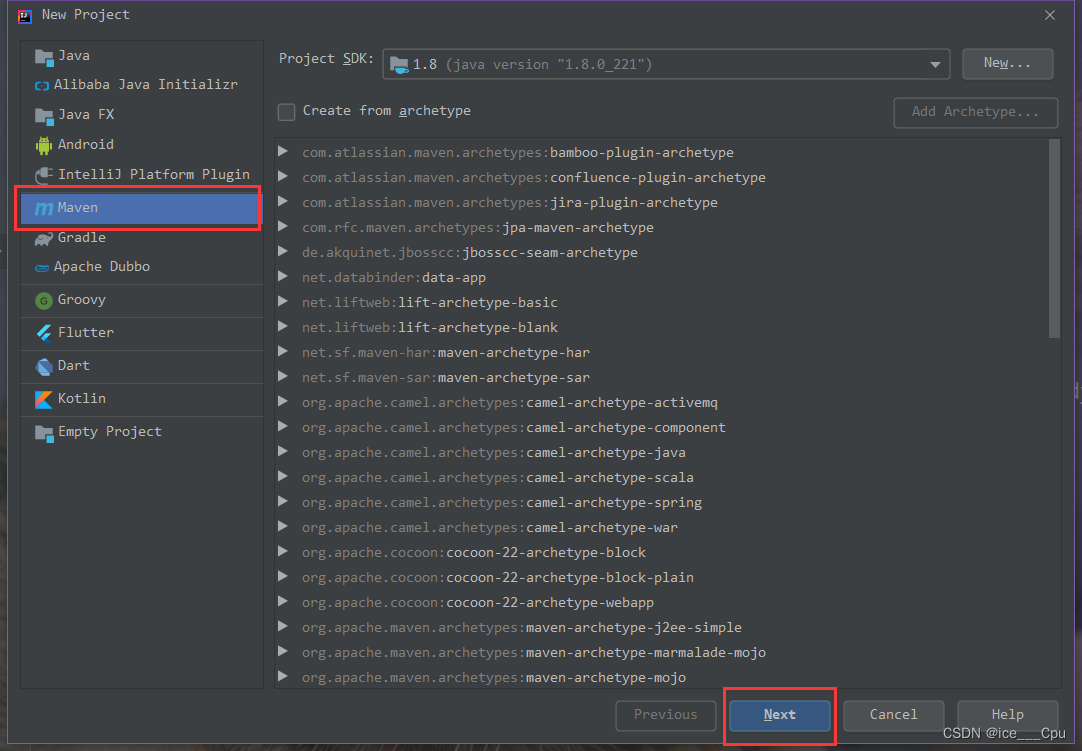winpcap 官网:http://www.winpcap.org/
1.首先下载安装 winpcap.exe,http://www.winpcap.org/install/default.htm
目的是安装相关驱动和 dll,安装完成之后基于 winpcap 的应用程序才能够正常运行。
2.下载 winpcap 的开发包,头文件和库文件:http://www.winpcap.org/devel.htm,解压之后主要是头文件和库文件,记得将 WpdPack 复制到 D 盘(直接放在D盘,不要包含在其他文件夹下),如图所示:

VS2022新建一个C++工程,具体操作可参考我上一篇文章,文章链接如下:http://t.csdnimg.cn/RRO57
创建工程后,首先在 vs 中配置(vc++目录:include 目录和 lib 目录),具体步骤如下:
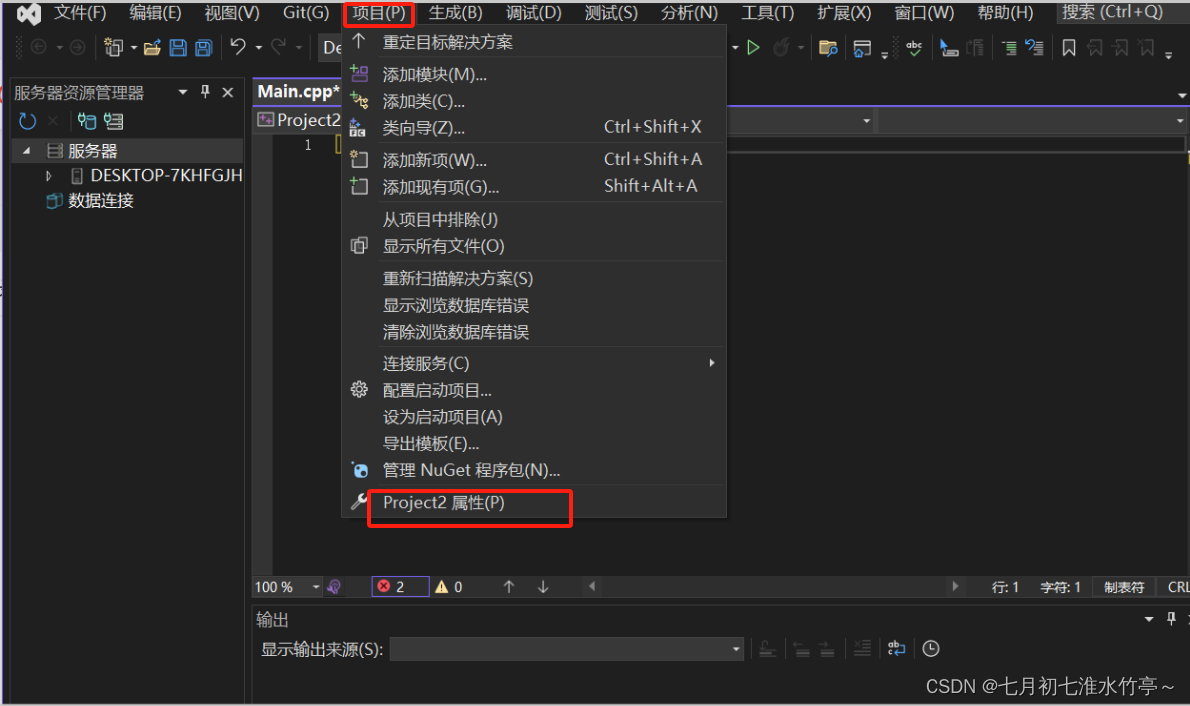
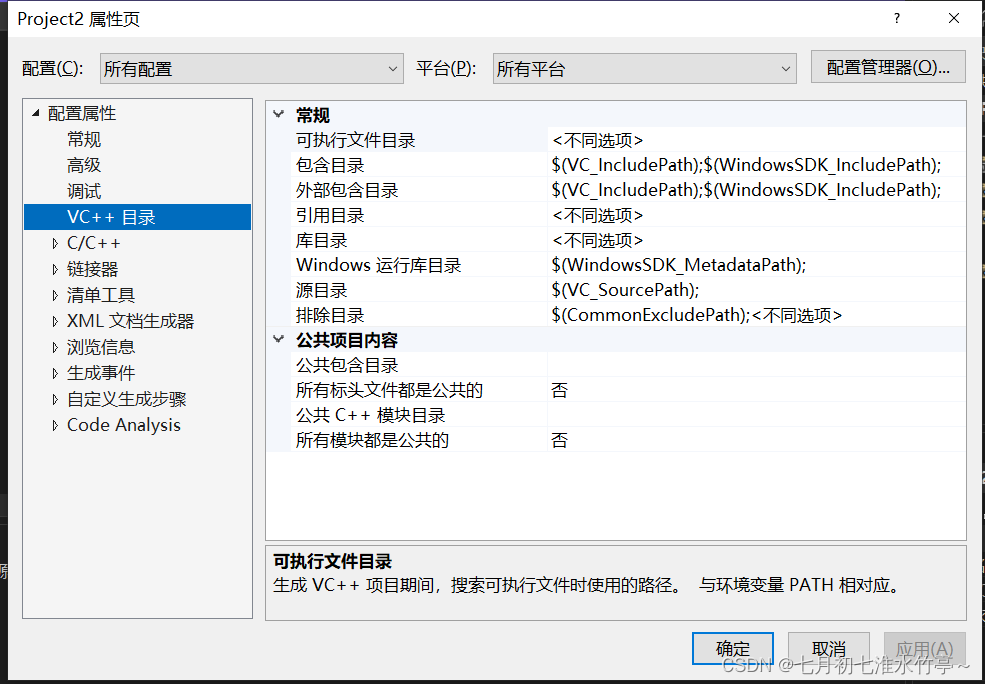
接下来修改“包含目录”和“库目录”,包含目录修改为:D:WpdPackInclude;$(IncludePath)
库目录修改为:D:WpdPackLibx64;$(LibraryPath),如图所示:

接着,link 输入:wpcap.lib,ws2_32.lib,具体步骤如下:

然后在“附加依赖项”处,添加wpcap.lib和ws2_32.lib两个库,如图所示:(前面的用这两个替换掉,后面的不要动)
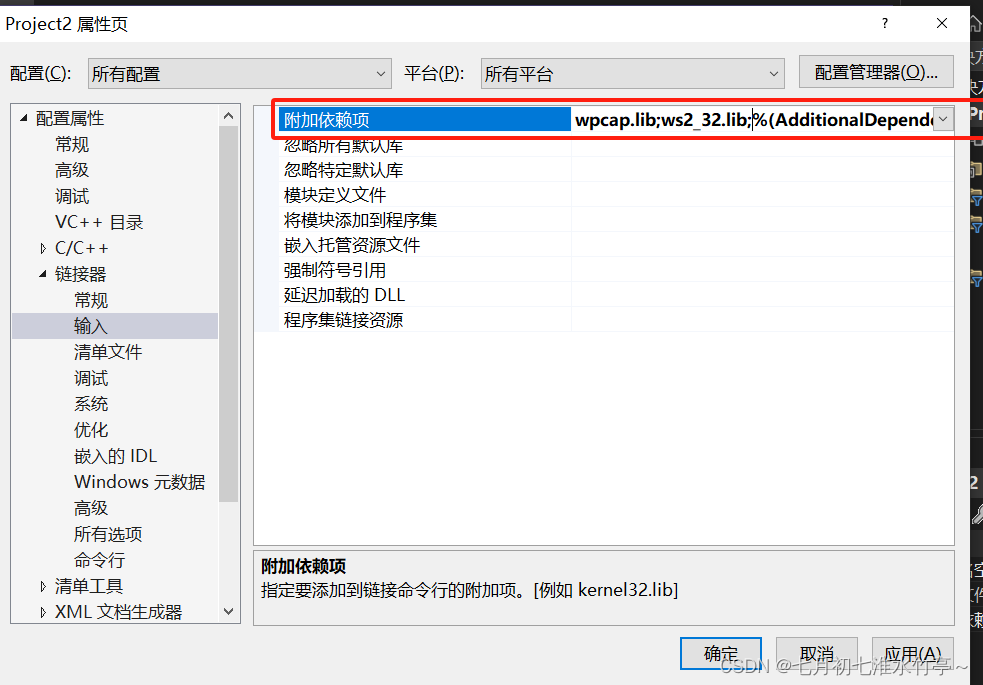
在配置属性处点击C/C++,接着点击“预处理器”,如图所示:
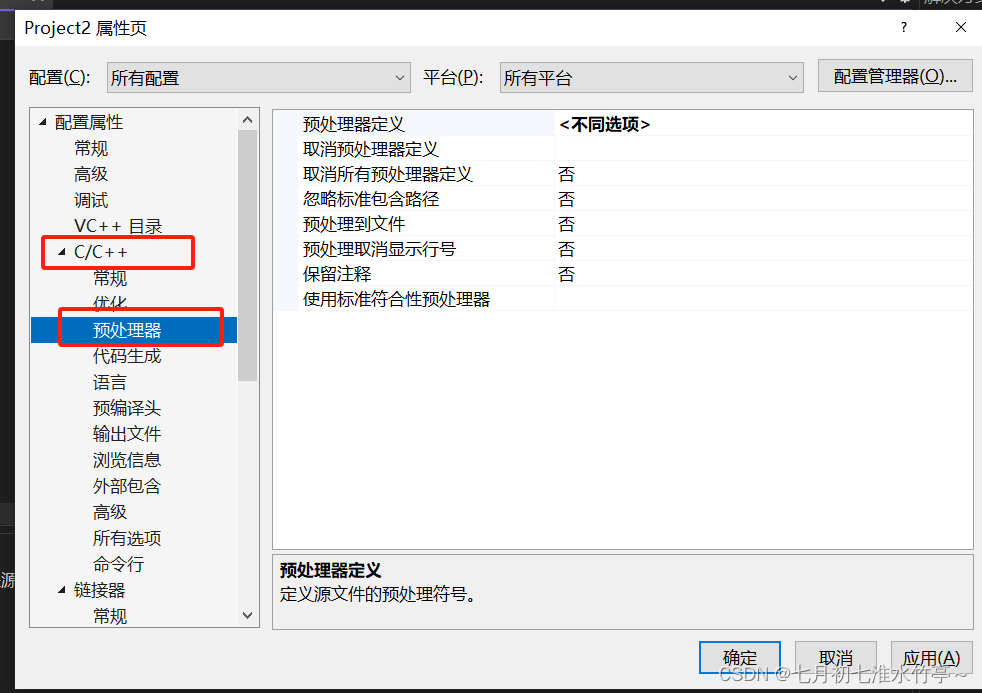
在“预处理器定义”处修改为“WPCAP;HAVE_REMOTE;WIN32;_CRT_SECURE_NO_WARNINGS;_WINSOCK_DEPRECATED_NO_WARNINGS”,如图所示:

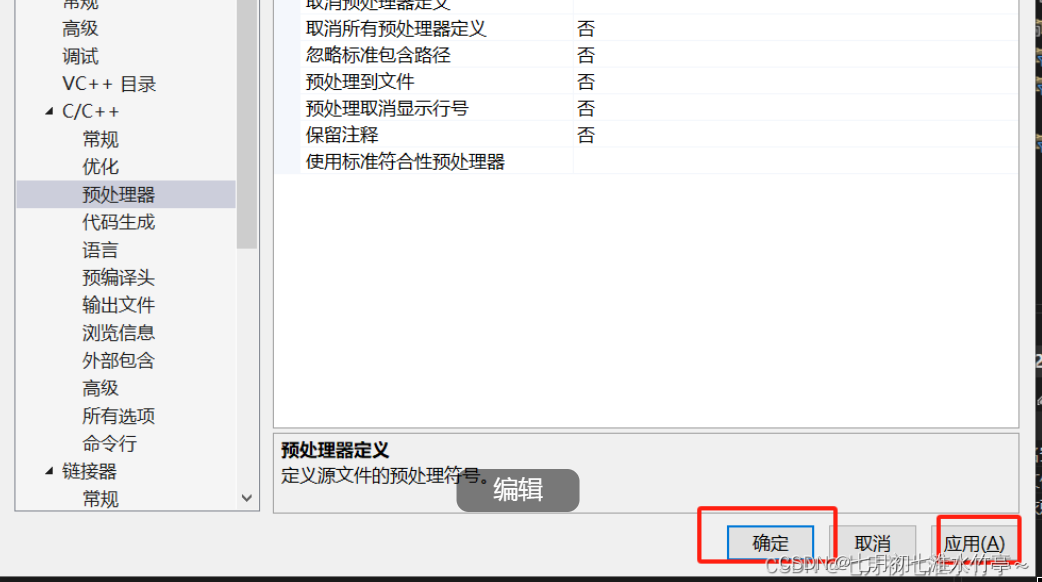
代码如下:
//#define HAVE_REMOTE
//#define WPCAP
#include "pcap.h"
#include <winsock2.h>
#include <string.h>
#include <stdio.h>
using namespace std;
#pragma comment(lib, "wpcap.lib")
#pragma comment(lib, "Ws2_32.lib")
#define LINE_LEN 16
#define MAX_ADDR_LEN 16
FILE* file = 0;
int ip_len;
int tcp_len;
// 以太网协议格式的定义
typedef struct ether_header {
u_char ether_dhost[6]; // 目标 MAC 地址
u_char ether_shost[6]; // 源 MAC 地址
u_short ether_type; // 以太网类型
}ether_header;
// 用户保存 4 字节的 IP 地址
typedef struct ip_address {
u_char byte1;
u_char byte2;
u_char byte3;
u_char byte4;
}ip_address;
// 用于保存 IPV4 的首部
typedef struct ip_header {
u_char version_hlen; // 首部长度 版本
u_char tos; // 服务质量
u_short tlen; // 总长度
u_short identification; // 身份识别
u_short flags_offset; // 标识 分组偏移
u_char ttl; // 生命周期
u_char proto; // 协议类型
u_short checksum; // 包头测验码
u_int saddr; // 源 IP 地址
u_int daddr; // 目的 IP 地址
}ip_header;
// 用于保存 TCP 首部
typedef struct tcp_header {
u_short sport;
u_short dport;
u_int sequence; // 序列码
u_int ack; // 回复码
u_char hdrLen; // 首部长度保留字
u_char flags; // 标志
u_short windows; // 窗口大小
u_short checksum; // 校验和
u_short urgent_pointer; // 紧急指针
}tcp_header;
// 用于保存 UDP 的首部
typedef struct udp_header {
u_short sport; // 源端口
u_short dport; // 目标端口
u_short datalen; // UDP 数据长度
u_short checksum; // 校验和
}udp_header;
// 用于保存 ICMP 的首部
typedef struct icmp_header {
u_char type; // ICMP 类型
u_char code; // 代码
u_short checksum; // 校验和
u_short identification; // 标识
u_short sequence; // 序列号
u_long timestamp; // 时间戳
}icmp_header;
// 用于保存 ARP 的首部
typedef struct arp_header {
u_short hardware_type; // 格式化的硬件地址
u_short protocol_type; // 协议地址格式
u_char hardware_length; // 硬件地址长度
u_char protocol_length; // 协议地址长度
u_short operation_code; // 操作码
u_char source_ethernet_address[6]; // 发送者硬件地址
u_char source_ip_address[4]; // 发送者协议地址
u_char destination_ethernet_address[6]; // 目的方硬件地址
u_char destination_ip_address[4]; // 目的方协议地址
}arp_header;
#define str4cmp(m, c0, c1, c2, c3)
(m[0] == c0 && m[1] == c1 && m[2] == c2 && m[3] == c3)
void http_protocol_packet_handle(u_char* arg, const struct pcap_pkthdr* pkt_header, const
u_char* pkt_content)
{
FILE* file1 = 0;
//下面这个打开文件能写在这里吗?在这里打开有什么问题?写在这里合适吗?如何改进一下?
if ((file1 = freopen("http.txt", "a", stdout)) == 0)
printf("Cannot open the file.n");
//加上前面的 IP 头以及以太网还有 TCP 头才是 HTTP 数据包头部
const u_char* http_head = (u_char*)pkt_content + (14 + ip_len + tcp_len);
if (http_head != NULL) {//报文有内容:
if (str4cmp(http_head, 'G', 'E', 'T', ' ')) {//判断是否为 GET 请求
printf("n===================HTTP Protocol=================n");
u_char* uri_start = (u_char*)http_head + 4;
u_char* p = uri_start;
printf("当前 HTTP 请求 uri 是:");
while (true)
{
if (str4cmp(p, 'H', 'T', 'T', 'P')) //说明相对 url 读取完毕
break;
printf("%c", p[0]);
p = p + 1;
}
printf("nhost:");
while (true)
{
if (str4cmp(p, 'H', 'o', 's', 't'))
{
p = p + 5;//跳过 HOST:
while (true)
{
printf("%c", p[0]);
if (p[1] == 'n') //如果下一个是换行符,就说明这一行读取结束,host 读取完毕
break;
p = p + 1;
}
break;
}
p = p + 1;
}
}
}
fclose(stdin);
fclose(file1);
}
// TCP 协议处理
//u_short sport;
//u_short dport;
//u_int sequence; // 序列码
//u_int ack; // 回复码
//u_char hdrLen; // 首部长度保留字
//u_char flags; // 标志
//u_short windows; // 窗口大小
//u_short checksum; // 校验和
//u_short urgent_pointer; // 紧急指针
// ntohs()是一个函数名,作用是将一个 16 位数由网络字节顺序转换为主机字节顺序
void tcp_protocol_packet_handle(u_char* arg, const struct pcap_pkthdr* pkt_header, const
u_char* pkt_content)
{
tcp_header* tcp_protocol;
tcp_protocol = (tcp_header*)(pkt_content + 14 + 20);
//cout << sizeof(u_int) << endl;
printf("===================TCP Protocol=================n");
printf("Source Port: %in", ntohs(tcp_protocol->sport));
printf("Destination Port: %in", ntohs(tcp_protocol->dport));//8002
printf("Sequence number: %dn", ntohl(tcp_protocol->sequence));
printf("Acknowledgment number: %dn", ntohl(tcp_protocol->ack));
printf("Header Length: %dn", (tcp_protocol->hdrLen >> 4) * 4);
printf("Flags: 0x%.3x ", tcp_protocol->flags);
tcp_len = (tcp_protocol->hdrLen >> 4) * 4;
if (tcp_protocol->flags & 0x08) printf("(PSH)");
if (tcp_protocol->flags & 0x10) printf("(ACK)");
if (tcp_protocol->flags & 0x02) printf("(SYN)");
if (tcp_protocol->flags & 0x20) printf("(URG)");
if (tcp_protocol->flags & 0x01) printf("(FIN)");
if (tcp_protocol->flags & 0x04) printf("(RST)");
if (ntohs(tcp_protocol->dport) == 80)
{
//获取 HTTP 数据包的 header 地址 传入 HTTP 解析函数
http_protocol_packet_handle(arg, pkt_header, pkt_content);
}
printf("n");
printf("Windows Size: %in", ntohs(tcp_protocol->windows));
printf("Checksum: 0x%.4xn", ntohs(tcp_protocol->checksum));
printf("Urgent Pointer: %in", ntohs(tcp_protocol->urgent_pointer));
}
// UDP 协议处理
//u_short sport; // 源端口
//u_short dport; // 目标端口
//u_short datalen; // UDP 数据长度
//u_short checksum; // 校验和
void udp_protocol_packet_handle(u_char* arg, const struct pcap_pkthdr* pkt_header, const
u_char* pkt_content)
{
udp_header* udp_protocol;
udp_protocol = (udp_header*)(pkt_content + 14 + 20);
printf("===================UDP Protocol=================n");
printf("Source Port: %in", ntohs(udp_protocol->sport));
printf("Destination Port: %in", ntohs(udp_protocol->dport));
printf("Datalen: %in", ntohs(udp_protocol->datalen));
printf("Checksum: 0x%.4xn", ntohs(udp_protocol->checksum));
}
// ICMP 协议处理
//u_char type; // ICMP 类型
//u_char code; // 代码
//u_short checksum; // 校验和
//u_short identification; // 标识
//u_short sequence; // 序列号
//u_long timestamp; // 时间戳
void icmp_protocol_packet_handle(u_char* arg, const struct pcap_pkthdr* pkt_header, const
u_char* pkt_content)
{
icmp_header* icmp_protocol;
icmp_protocol = (icmp_header*)(pkt_content + 14 + 20);
printf("==================ICMP Protocol=================n");
printf("Type: %d ", icmp_protocol->type);
switch (icmp_protocol->type)
{
case 8:
printf("(request)n");
break;
case 0:
printf("(reply)n");
break;
default:
printf("n");
break;
}
printf("Code: %dn", icmp_protocol->code);
printf("CheckSum: 0x%.4xn", ntohs(icmp_protocol->checksum));
printf("Identification: 0x%.4xn", ntohs(icmp_protocol->identification));
printf("Sequence: 0x%.4xn", ntohs(icmp_protocol->sequence));
}
// ARP 协议处理
//u_short hardware_type; // 格式化的硬件地址
//u_short protocol_type; // 协议地址格式
//u_char hardware_length; // 硬件地址长度
//u_char protocol_length; // 协议地址长度
//u_short operation_code; // 操作码
//u_char source_ethernet_address[6]; // 发送者硬件地址
//u_char source_ip_address[4]; // 发送者协议地址
//u_char destination_ethernet_address[6]; // 目的方硬件地址
//u_char destination_ip_address[4]; // 目的方协议地址
void arp_protocol_packet_handle(u_char* arg, const struct pcap_pkthdr* pkt_header, const
u_char* pkt_content)
{
arp_header* arp_protocol;
arp_protocol = (arp_header*)(pkt_content + 14);
printf("==================ARP Protocol==================n");
printf("Hardware Type: ");
switch (ntohs(arp_protocol->hardware_type))
{
case 1:
printf("Ethernet");
break;
default:
break;
}
printf(" (%d)n", ntohs(arp_protocol->hardware_type));
printf("Protocol Type: n");
switch (ntohs(arp_protocol->protocol_type))
{
case 0x0800:
printf("%s", "IP");
break;
case 0x0806:
printf("%s", "ARP");
break;
case 0x0835:
printf("%s", "RARP");
break;
default:
printf("%s", "Unknown Protocol");
break;
}
printf(" (0x%04x)n", ntohs(arp_protocol->protocol_type));
printf("Hardware Length: %dn", arp_protocol->hardware_length);
printf("Protocol Length: %dn", arp_protocol->protocol_length);
printf("Operation Code: ");
switch (ntohs(arp_protocol->operation_code))
{
case 1:
printf("request");
break;
case 2:
printf("reply");
break;
default:
break;
}
printf(" (%i)n", ntohs(arp_protocol->operation_code));
}
// IP 协议处理
//u_char version_hlen; // 首部长度 版本
//u_char tos; // 服务质量
//u_short tlen; // 总长度
//u_short identification; // 身份识别
//u_short flags_offset; // 标识 分组偏移
//u_char ttl; // 生命周期
//u_char proto; // 协议类型
//u_short checksum; // 包头测验码
//u_int saddr; // 源 IP 地址
//u_int daddr; // 目的 IP 地址
void ip_protocol_packet_handle(u_char* arg, const struct pcap_pkthdr* pkt_header, const
u_char* pkt_content)
{
ip_header* ip_protocol;
sockaddr_in source, dest;
char sourceIP[MAX_ADDR_LEN], destIP[MAX_ADDR_LEN];
ip_protocol = (ip_header*)(pkt_content + 14);
source.sin_addr.s_addr = ip_protocol->saddr;
dest.sin_addr.s_addr = ip_protocol->daddr;
strncpy(sourceIP, inet_ntoa(source.sin_addr), MAX_ADDR_LEN);
strncpy(destIP, inet_ntoa(dest.sin_addr), MAX_ADDR_LEN);
printf("===================IP Protocol==================n");
printf("Version: %dn", ip_protocol->version_hlen >> 4);
printf("Header Length: %d bytesn", (ip_protocol->version_hlen & 0x0f) * 4);
ip_len = (ip_protocol->version_hlen & 0x0f) * 4;
printf("Tos: %dn", ip_protocol->tos);
printf("Total Length: %dn", ntohs(ip_protocol->tlen));
printf("Identification: 0x%.4x (%i)n", ntohs(ip_protocol->identification), ntohs(ip_protocol->identification));
printf("Flags: %dn", ntohs(ip_protocol->flags_offset) >> 13);
printf("---Reserved bit: %dn", (ntohs(ip_protocol->flags_offset) & 0x8000) >> 15);
printf("---Don't fragment: %dn", (ntohs(ip_protocol->flags_offset) & 0x4000) >> 14);
printf("---More fragment: %dn", (ntohs(ip_protocol->flags_offset) & 0x2000) >> 13);
printf("Fragment offset: %dn", ntohs(ip_protocol->flags_offset) & 0x1fff);
printf("Time to live: %dn", ip_protocol->ttl);
printf("Protocol Type: ");
switch (ip_protocol->proto)
{
case 1:
printf("ICMP");
break;
case 6:
printf("TCP");
break;
case 17:
printf("UDP");
break;
default:
break;
}
printf(" (%d)n", ip_protocol->proto);
printf("Header checkSum: 0x%.4xn", ntohs(ip_protocol->checksum));
printf("Source: %sn", sourceIP);
printf("Destination: %sn", destIP);
if (ip_protocol->proto == htons(0x0600))
tcp_protocol_packet_handle(arg, pkt_header, pkt_content);
else if (ip_protocol->proto == htons(0x1100))
udp_protocol_packet_handle(arg, pkt_header, pkt_content);
else if (ip_protocol->proto == htons(0x0100))
icmp_protocol_packet_handle(arg, pkt_header, pkt_content);
}
// Ethernet 协议处理
void ethernet_protocol_packet_handle(u_char* arg, const struct pcap_pkthdr* pkt_header, const u_char* pkt_content)
{
ether_header* ethernet_protocol;//以太网协议
u_short ethernet_type; //以太网类型
u_char* mac_string; //以太网地址
//获取以太网数据内容
ethernet_protocol = (ether_header*)pkt_content;
ethernet_type = ntohs(ethernet_protocol->ether_type);
printf("==============Ethernet Protocol=================n");
//以太网目标地址
mac_string = ethernet_protocol->ether_dhost;
printf("Destination Mac Address: %02x:%02x:%02x:%02x:%02x:%02xn", *mac_string,
*(mac_string + 1), *(mac_string + 2), *(mac_string + 3), *(mac_string + 4), *(mac_string + 5));
//以太网源地址
mac_string = ethernet_protocol->ether_shost;
printf("Source Mac Address: %02x:%02x:%02x:%02x:%02x:%02xn", *mac_string, *(mac_string + 1), *(mac_string + 2), *(mac_string + 3), *(mac_string + 4), *(mac_string + 5));
printf("Ethernet type: ");
switch (ethernet_type)
{
case 0x0800:
printf("%s", "IP");
break;
case 0x0806:
printf("%s", "ARP");
break;
case 0x0835:
printf("%s", "RARP");
break;
default:
printf("%s", "Unknown Protocol");
break;
}
printf(" (0x%04x)n", ethernet_type);
switch (ethernet_type)
{
case 0x0800:
ip_protocol_packet_handle(arg, pkt_header, pkt_content);
break;
case 0x0806:
arp_protocol_packet_handle(arg, pkt_header, pkt_content);
break;
case 0x0835:
printf("==============RARP Protocol=================n");
printf("RARPn");
break;
default:
printf("==============Unknown Protocol==============n");
printf("Unknown Protocoln");
break;
}
}
int main()
{
pcap_if_t* alldevs; //适配器列表,它是一个链表的数据结构
pcap_if_t* d; //保存某个适配器
pcap_t* fp;
int res;
struct pcap_pkthdr* header;
const u_char* pkt_data;
time_t local_tv_sec;
struct tm* ltime;
char timestr[16];
int count = 1;
int i = 0, inum;
char errbuf[PCAP_ERRBUF_SIZE];
printf("===============Adapter List===============n");
//获取本地设备列表
if (pcap_findalldevs(&alldevs, errbuf) == -1)
{
fprintf(stderr, "Error in pcap_findalldevs: %sn", errbuf);
exit(1);
}
//htons()作用是将端口号由主机字节序转换为网络字节序的整数值。(host to net)
//inet_addr()作用是将一个 IP 字符串转化为一个网络字节序的整数值,用于sockaddr_in.sin_addr.s_addr。
//inet_ntoa()作用是将一个 sin_addr 结构体输出成 IP 字符串(network to ascii)。
//输出列表
for (d = alldevs; d != NULL; d = d->next)
{
//printf("%d. %s,addr:%s", ++i, d->name, d->addresses->addr->sa_data);
printf("%d. %s,", ++i, d->name);
if (d->description)
printf(" (%s)n", d->description);
else
printf(" (No description available)n");
}
if (i == 0)
{
printf("nNo interfaces found! Make sure WinPcap is installed.n");
return -1;
}
//获取选择编号
while (1)
{
printf("nEnter the interface number (1-%d): ", i);
scanf("%d",&inum);
if (inum > 0 && inum <= i)
break;
}
//跳到用户选择的适配器
for (d = alldevs, i = 0; i < inum - 1; ++i, d = d->next);
//打开适配器
if ((fp = pcap_open_live(d->name,65536,1,1000,errbuf)) == NULL)
{
fprintf(stderr, "nError openning adapter: %sn", errbuf);
pcap_freealldevs(alldevs);
return -1;
}
//检查链路层的类型
if (pcap_datalink(fp) != DLT_EN10MB)
{
fprintf(stderr, "This program only run on Ethernet networksn");
pcap_close(fp);
pcap_freealldevs(alldevs);
return -1;
}
printf("The program is working......n");
printf("The capture file is saving as 'data.txt'n");
printf("You can input 'ctrl + C' to stop the programn");
if ((file = freopen("data.txt", "w", stdout)) == 0)
printf("Cannot open the file.n");
while ((res = pcap_next_ex(fp, &header, &pkt_data)) >= 0)
{
//超时
if (res == 0)
continue;
//将时间戳转化为可识别格式
local_tv_sec = header->ts.tv_sec;
ltime = localtime(&local_tv_sec);
strftime(timestr, sizeof(timestr), "%H:%M:%S", ltime);
//输出编号、时间戳和包长度
printf("============================================================================= = n");
printf("No.%dttime: %stlen: %ldn", count++, timestr, header->len);
printf("============================================================================= = n");
char temp[LINE_LEN + 1];
//输出包
for (i = 0; i < header->caplen; ++i)
{
printf("%.2x ", pkt_data[i]);
if (isgraph(pkt_data[i]) || pkt_data[i] == ' ')
temp[i % LINE_LEN] = pkt_data[i];
else
temp[i % LINE_LEN] = '.';
if (i % LINE_LEN == 15)
{
temp[16] = '';
printf(" ");
printf("%s", temp);
printf("n");
memset(temp, 0, LINE_LEN);
}
}
printf("n");
//分析数据包
ethernet_protocol_packet_handle(NULL, header, pkt_data);
}
if (res == -1)
{
printf("Error reading the packets: %sn", pcap_geterr(fp));
pcap_close(fp);
pcap_freealldevs(alldevs);
fclose(stdin);
if (file)
fclose(file);
return -1;
}
//释放
pcap_close(fp);
pcap_freealldevs(alldevs);
fclose(stdin);
if (file)
fclose(file);
return 0;
}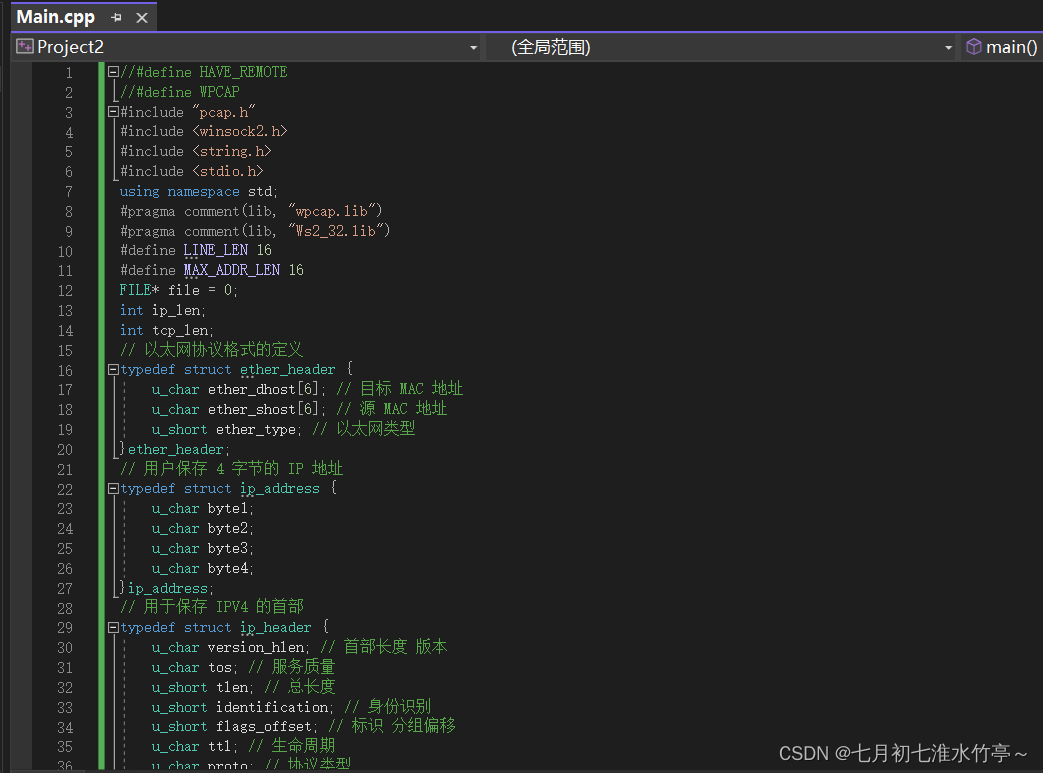
点击运行:

结果如图所示:
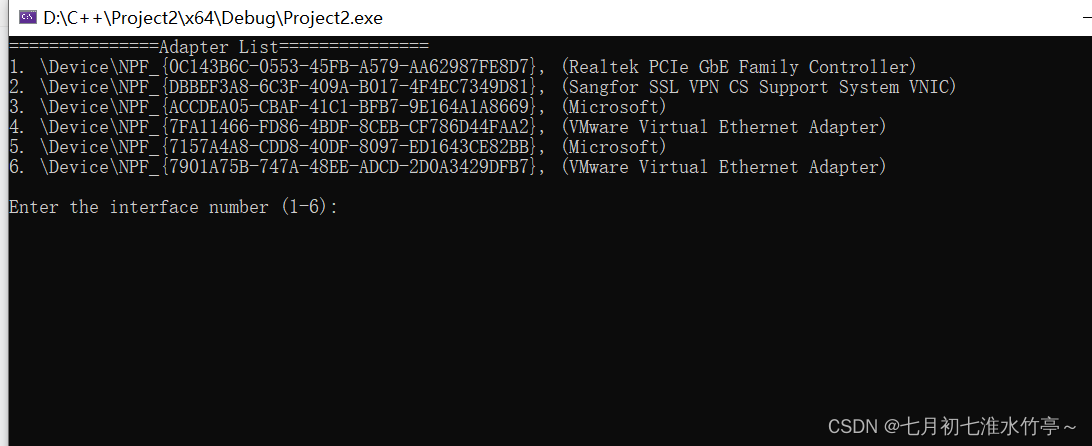
成功啦!
原文地址:https://blog.csdn.net/m0_63002183/article/details/134775819
本文来自互联网用户投稿,该文观点仅代表作者本人,不代表本站立场。本站仅提供信息存储空间服务,不拥有所有权,不承担相关法律责任。
如若转载,请注明出处:http://www.7code.cn/show_37494.html
如若内容造成侵权/违法违规/事实不符,请联系代码007邮箱:suwngjj01@126.com进行投诉反馈,一经查实,立即删除!

